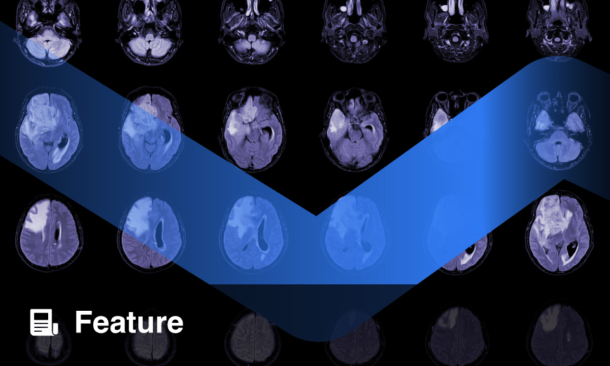INTRODUCTION
March 11th 2020 marked the day that the World Health Organization (WHO) escalated the coronavirus SARS-CoV-2 (COVID-19) outbreak from a public health emergency to a global pandemic. Since first identified in December 2019 in Wuhan, China, the confirmed cases of COVID-19 have reached a staggering 1,097,909, while claiming a total of 59,131 lives, at the time of writing.1 Of the numerous countries afflicted, the USA is presently the worst affected with 276,995 confirmed cases and expected logarithmic expansion as widespread testing capabilities take traction.
Despite the ubiquitous media coverage and accompanying number of scientific publications, the exact nature of transmission, risk stratification, and optimal management strategies to mitigate this threat remain elusive. Reported data on COVID-19 has taken the form of single case reports, letters to the editor, media interviews from healthcare officials, and recent original research. The sheer quantity of reporting with inconsistent methodology and variable rigor of peer review to publication thresholds amidst a healthcare crisis inherently introduces a heterogeneity rife with limitations in the practical adoption of findings.
EPIDEMIOLOGIC STUDIES OF COVID-19
Of the reported original research literature, Li et al.2 have published the first 425 cases of COVID-19 pneumonia originating from Wuhan, China. Findings from this study provided important epidemiologic data: the median age at diagnosis was 59 years, the mean incubation period was 5.2 days, and the number of positive cases doubled every 7.4 days. Authors from this publication further noted a higher rate of critical illness amongst older patients with comorbid conditions. A USA based study3 paralleled similar data from the first cases originating from a long-term care facility in King County, Washington, USA. Among 167 confirmed COVID-19 cases, including nursing home residents, healthcare staff, and visitors, there was a reliably higher proportion of severe illness amongst older patients and those with comorbidities. In total, the calculated case fatality rate based on the Chinese report is approximately 2% (although this may be inflated given the likely under-representation of untested asymptomatic carriers2).
COVID-19 AND CANCER
While cancer patients have an especially high risk of contracting severe infections, a paucity of studies examining the implications of COVID-19 in this group exist. A large study recently published reported on 1,590 laboratory-confirmed COVID-19 cases from 575 hospitals in 31 provincial regions in the People’s Republic of China.4 Of the 1,590 cases, 18 COVID-19 infected patients carried a diagnosis of cancer: five patients had lung cancer, four patients had received chemotherapy or surgery within the month prior to infection, and 12 were cancer survivors receiving routine follow-up after primary resection. Additionally, the study revealed that COVID-19 infected patients with cancer were older, more likely to have a history of smoking, and more likely to present with tachypnoea, compared with non-cancer patients. Notably, actively infected cancer patients in this cohort exhibited a higher incidence of severe events as defined by the need for invasive ventilation, intensive care unit (ICU) admission, or death when compared with their non-cancer counterparts. Lastly, the time to severe clinical decline among COVID-19 infected cancer patients was shorter compared to non-cancer patients. The investigators intuitively postulated the importance of more intensive monitoring for infected cancer patients, the need to postpone adjuvant chemotherapy, and recommended deferring elective surgeries.
MANY MISSING PIECES
While epidemiological studies such as those alluded to above are valuable contributions to the literature, they tandemly provoke unanswered questions and highlight the grossly missing granularity required to identify causal relationships and formulate risk mitigation strategies. For instance, these studies reliably report on the age distribution and incidence of infections but neglect the rate and time of recovery, duration of hospitalisation, and management strategy of the reported cohort, which hinders real-world applicability. While Liang et al.4 appropriately suggest the pragmatic notion of postponing adjuvant chemotherapy among cancer patients in the unmitigated COVID-19 era, the study fails to provide treatment specific details amongst the entire cancer patient cohort to categorically validate this modality across all cases. Additionally, while their study remarks on the severe morbidity associated with COVID-19 infection amongst cancer patients, it fails to report on the exact mortality rate, as ‘severe events’ conflate death with intubation and ICU level care in this population. Studies in this cancer cohort further do not reveal the haematological profile of cancer patients at the time of COVID-19 diagnosis, which is of obvious significance when establishing contributory risk in an intrinsically immunocompromised population.
Given the devastating and rapidly proliferating number of COVID-19 fatalities across the globe, comprehensive and non-piecemealed data may help elucidate the disease kinetics, allow personalisation of cancer-directed therapies, facilitate prognostication indices, and collectively enable effective risk mitigation policies. One may argue that reporting comprehensive disease specific data may fall beyond the scope of the intended analysis in such studies. However, these details are resolutely inextricable from the variables required to formulate confluent risk mitigation strategies if we are to efficiently contain and eradicate this infection. While most society guidelines have incepted the idea of postponing adjuvant chemotherapy and elective surgical procedures to mitigate the risk of pathogenic exposure and ensuing infection, a one-size-fits-all approach will fail if applied to all patients.
COVID-19 AND CANCER THERAPIES
Although myelosuppressive chemotherapy in the COVID-19 era may cause immunosuppression leading to a higher risk for transmitted disease, not all cancer therapies may carry a pejorative connotation. For instance, immunotherapies such as immune checkpoint inhibitors have been proven to be exceptionally effective in the management of various malignancies, most notably in metastatic melanoma. However, these agents may concurrently furnish anti-infective properties through accentuated immune-effector-cell recruitment and directed function against pathogens.5 Contrarily, it is possible that immune checkpoint inhibitors may also impose pulmonary toxicity and cytokine mediated effects,6 which may confound the presence of concomitant or isolated life-threatening infection from COVID-19 and thereby limit use.
U.S. Food and Drug Administration (FDA)-approved and investigational adoptive cell-based therapies have increasingly been utilised in the management of various cancers. For instance, anti-CD19 directed chimeric antigen receptor (CAR) T-cell therapies have exhibited unprecedented response rates with the potential to induce durable remissions in various B-cell malignancies.7 However, adoptive transfer with CAR T cells requires immunosuppressive lymphodepletion prior to cellular product infusion to optimise the cytokine mircoenvironment and facilitate cellular expansion.8 By augmenting the therapeutic potential of cell therapies directed against the patient’s known malignancy, lymphodepletion may inversely pose risk from infectious complications and thereby invoke their cautious use in the COVID-19 era. Additionally, the signature toxicities associated with CAR T cells often include a systemic inflammatory response manifested by fevers and potential hypoxia,7 which further confounds the well accepted symptoms of COVID-19.9 While this conjecture is not tested, universal rejection or adoption of any specific cancer therapy without comprehensive data is speculative.
FUTURE DIRECTIONS AND CONCLUSIONS
At the time of writing, generalisable and standardised guidelines in the management of any group of patients (cancer or otherwise) are limited, albeit growing. This largely stems from incomplete published data mired by study limitations in the face of a novel and formidable resource-consuming opponent in COVID-19. Most available data largely encapsulate superficial epidemiological elements without the corresponding granular details to glean true context. For instance, we have some preliminary information regarding disease kinetics stemming from the first several hundred cases in Wuhan,2 but do not have case specifics of the index patient, or ‘patient zero’. The exact pathogenesis of the disease is poorly understood, although it is thought to gain entry through an angiotensin converting enzyme target;10 however, the reported studies describing hypertension as a risk factor9 lack data pertaining to concurrent antihypertensive use (i.e., angiotensin converting enzyme inhibitors), a critical detail when contemplating risk mitigation strategies. Additionally, it is quite intuitive that cancer patients are most vulnerable to disease transmission, however it is unclear whether the indiscriminate omission of all cancer therapies is truly beneficial under such circumstances.
It is likely that many of the queries mentioned here will already be clarified by the time of this publication given the rapid pace of COVID-19 reporting. Reassuringly, there are innumerable research efforts exploring anti-infective therapies, vaccine strategies, antibody-based treatments, and anticytokine directed approaches, in the hope of expeditiously curtailing the devastating health, psychosocial, and economic impact this pathogen has inflicted upon society. While solace can be taken in the mass, scaled initiatives undertaken to discover a cure, greater solace can be taken in serving alongside the innumerable physicians, nurses, medical assistants, hospital staff, first responders, and caretakers as they selflessly tend to the human suffering imposed by this world-wide pandemic. While the data may not be perfect, the humanity of those showcasing their heroism during this unprecedented time clearly is.






